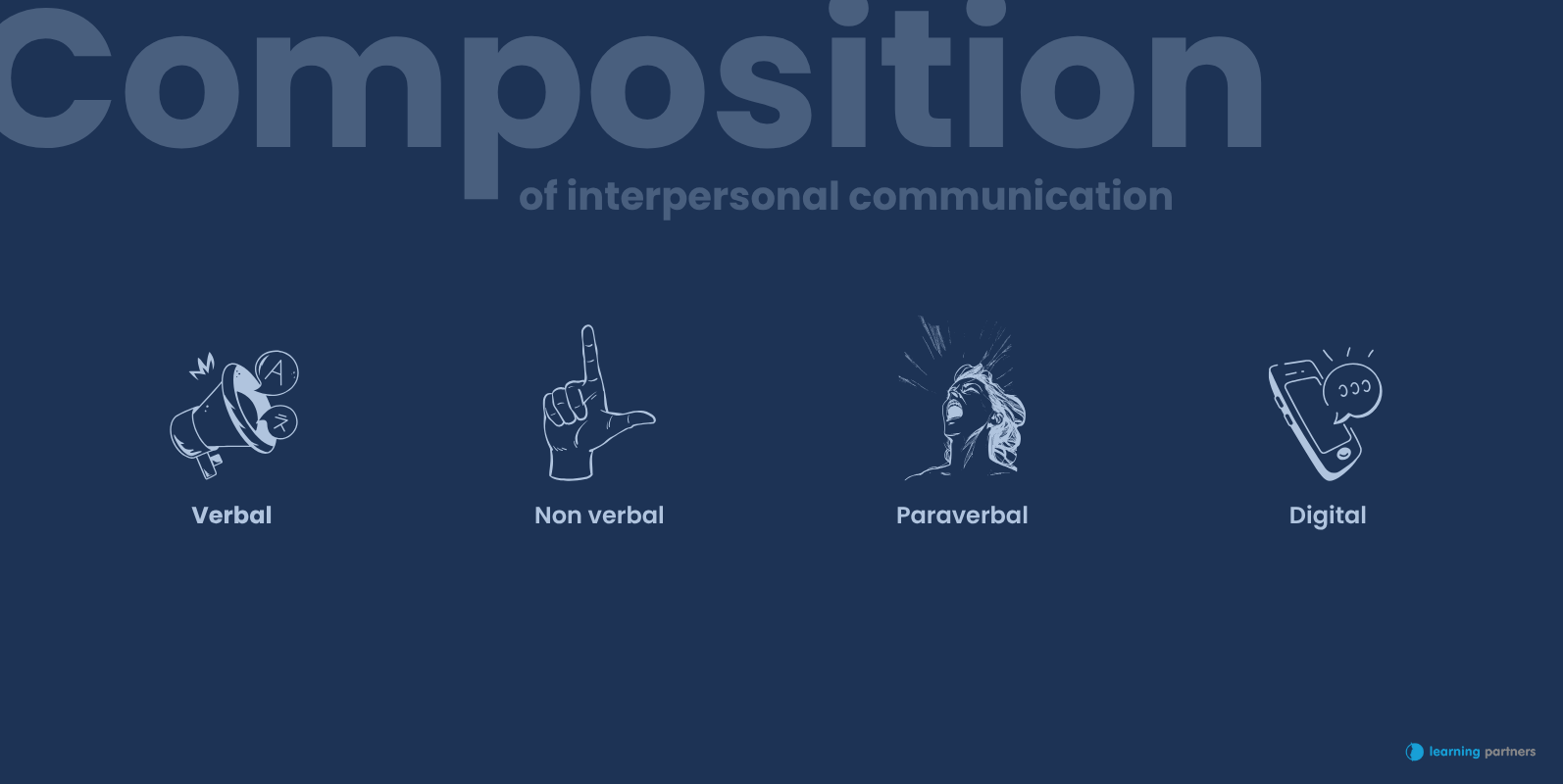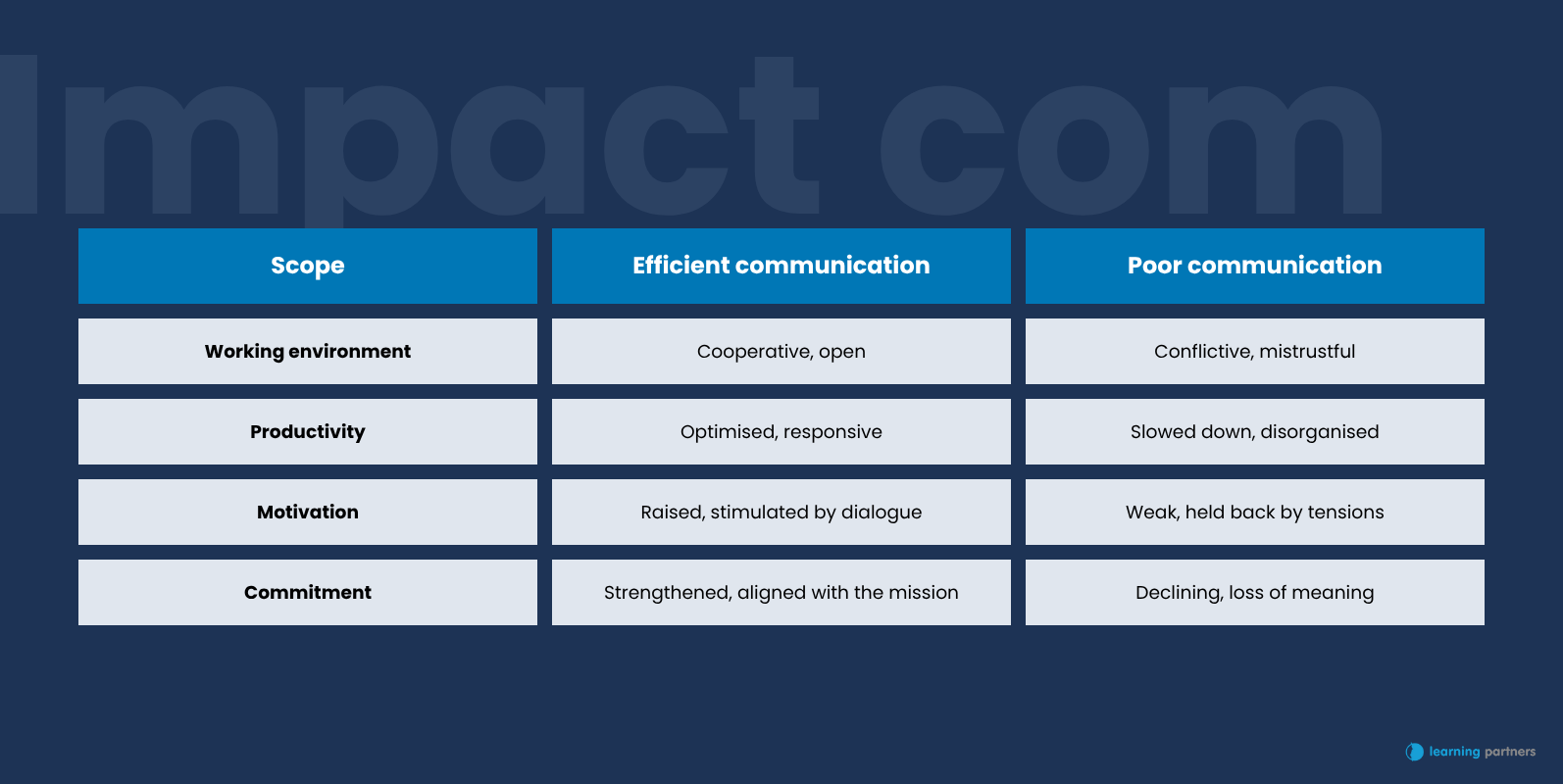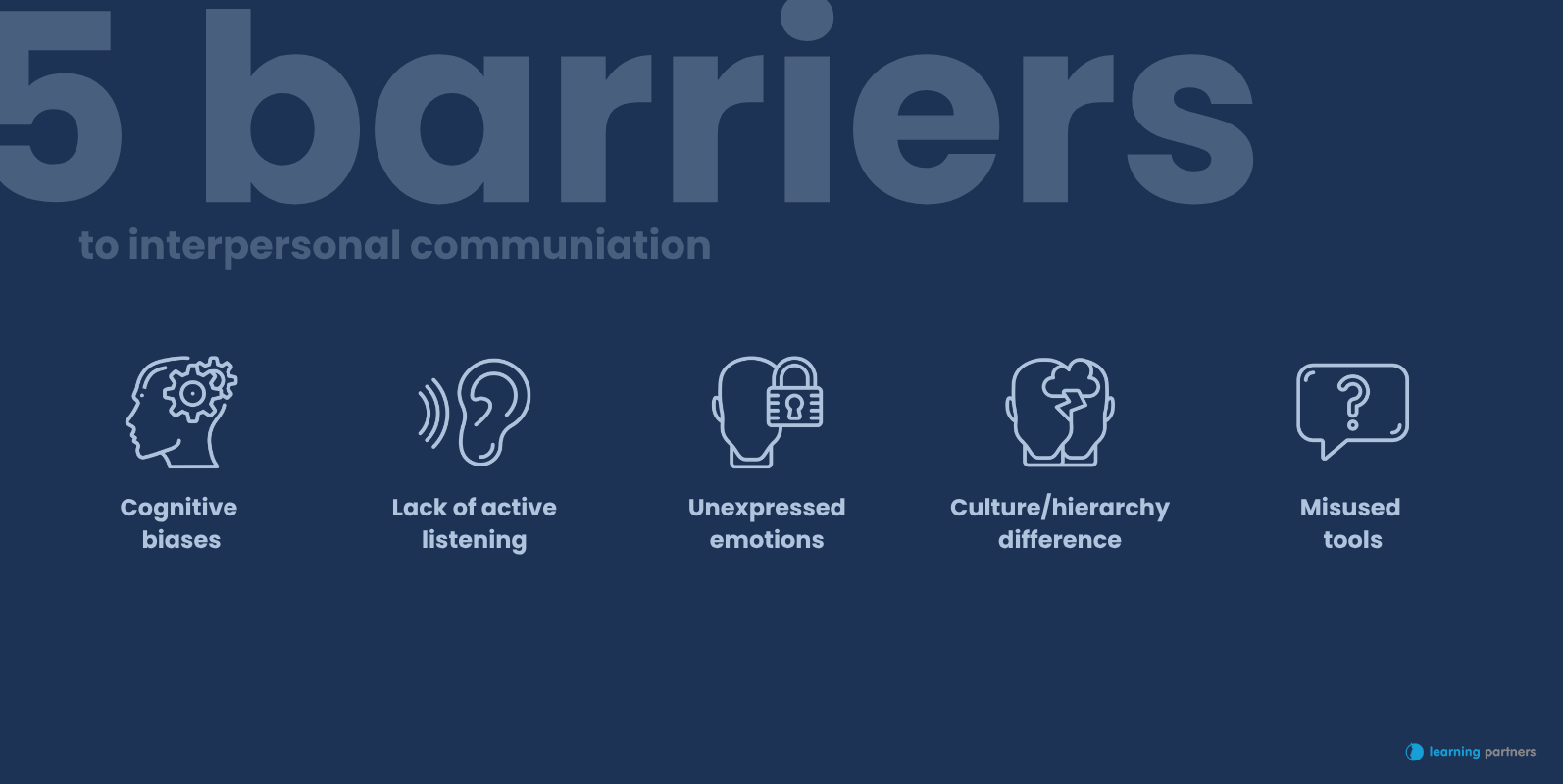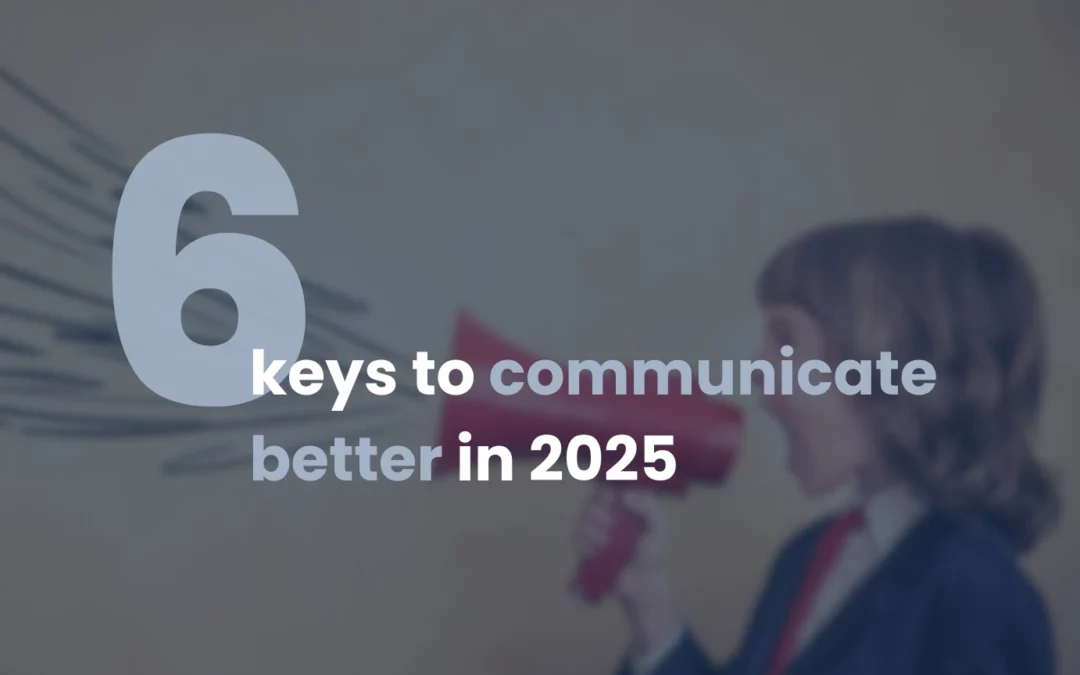Contents
Interpersonal communication: what are we talking about?
What are the different types of interpersonal communication?
Why is interpersonal communication crucial in the business?
What are the most common obstacles to good interpersonal communication?
6 keys to better communication in 2025
Bonuses for a deeper understanding of interpersonal communication
Making interpersonal communication a lever for sustainable performance
So let’s start at the beginning: what is interpersonal communication? Un expression that we often hear… but what does it actually mean in the world of work? In an environment where human exchanges are omnipresent, understanding the interpersonal communication in the workplace has become an essential lever for improving collaboration, preventing conflict and strengthening the organizational climate.
The verbal and non-verbal communicationThese are all dimensions that influence our professional interactions. And yet, many misunderstandings and tensions are rooted in a lack of understanding. poor understanding of interpersonal communication mechanisms. So how do you define it precisely? What are its components? Why is it so crucial to an organization?
In this article, we’ll take a closer look at the definition of interpersonal communicationby exploring its typesits issuesits obstaclesas well as key competencies to develop it effectively. Whether you’re a manager, HR manager or employee, you’ll find concrete guidelines and practical examples for strengthening your professional relationships.
Our goal: to give you a clear, pragmatic and actionable understanding of interpersonal communicationto make it a real asset for your company.
Interpersonal communication: what are we talking about?
The interpersonal communicationCommunication is the totality of verbal and non-verbal exchanges between two people. It can be formal or informal, synchronous or deferred, intentional or spontaneous. In the workplace, it plays a fundamental role in the transmission of ideas, the resolution of conflicts and the quality of relationships.
Far from being limited to words alone, this form of communication also involves elements such as tone of voice, posture, silences and gaze. In other words, interpersonal communication is both conscious and unconsciouswhich makes it complex but essential.

What are the different types of interpersonal communication?
Here are the 4 main categories:
- Verbal communication This is based on the use of oral or written language.
- Non-verbal communication is expressed through gestures, postures and facial expressions.
- Paraverbal communication includes tone, rhythm and pauses.
- Digital and mediatized communication e-mail, messaging, videoconferencing.
Each has its strengths and limitations. In a hybrid or multicultural context, knowing how to play on these different dimensions is a key skill.
For further information, see the Université de Sherbrooke’s analysis of forms of communication. (consult)
Why is interpersonal communication crucial in business?
Here are the concrete benefits of quality communication:
- Builds confidence andcommitment between teams.
- Improves quality of feedback and decision-making.
- Reduces the risk of errors, duplication or misalignment.
Creates a work environmentThe result is an environment that is conducive to collaboration. Below is a table summarizing the impact of effective versus ineffective communication.
According to Harvard Business Review, 70% of strategic errors are linked to communication problems.

What are the most common obstacles to good interpersonal communication?
Even the best communicators encounter obstacles. It’s essential to spot them so you can bypass or defuse them.
Among the most common:
- Cognitive biases hasty interpretations, generalizations.
- Lack of active listening A tendency to respond rather than understand.
- Unexpressed emotions frustration, anger, poorly channeled anxiety.
- Cultural or hierarchical differences implicit barriers to exchanges.
- Digital tools misused Digital tools: poorly formulated messages, poorly perceived tone.
These obstacles are not inevitable. With the right methods and tools, it’s possible to streamline exchanges. For a more in-depth look at the subject read our article on obstacles to interpersonal communication.

6 keys to better communication in 2025
Communicating better in 2025 means more than just knowing how to speak or listen. It’s about understanding, adapting and connecting in a hyper-connected, hybrid and demanding world. In an age of emotional intelligence, asynchronous exchanges and information overload, certain skills are becoming essential. Here are 6 concrete keys to strengthening your professional interactions and making your communication a real lever for performance and cohesion.
1. Radical active listening
It’s no longer enough to listen and respond. In 2025, we listening for understandingwithout interrupting, anticipating or judging. This means :
- Rephrase to check understanding.
- Ask open-ended questions.
- Be 100% present, without screens or distractions.
2. Emotional clarity
In a professional world where emotions are omnipresent (stress, uncertainty, mental workload), know how to name and regulate your emotions becomes a key skill. It’s not about being “emotional”, it’s about being emotionally lucid.
3. Adapting to the channel (and context)
Slack, Zoom, email, WhatsApp, meetings… In 2025, good communicators choose the right channel at the right timeaccording to :
- The emergency.
- Sensitivity level.
- The need for clarity or nuance.
4. Mastering hybrid non-verbal communication
With the widespread use of visios, non-verbal communication has changed. We must :
- Work posture, voice and gaze on camera.
- Read weak signals even from a distance.
- Maintain consistency between verbal and non-verbal communication.
5. Inclusive communication
Working with different profiles requires more inclusive communication:
- Ban ambiguous, sexist or exclusionary expressions.
- Clarify intentions.
- Greet objections without reacting defensively.
6. Continuous constructive feedback
Gone are the days of annual feedback. In 2025, high-performance teams will introduce :
- Short, regular, benevolentfeedback .
- Communication rituals (reviews, retrospectives).
- A culture of adjustment, not judgment.
Bonus to deepen the definition of interpersonal communication
Want to go further? Here is some additional content for you to explore to develop your interpersonal skills and enhance your collective performance:
- White paper Understanding human communication in the workplace
- Learning Partners training: Communicating with impact in a team
These resources will help you make interpersonal communication a powerful lever for alignment, commitment and leadership.
Making interpersonal communication a lever for sustainable performance
The interpersonal communication It shapes relationships, influences the quality of collaborative work and conditions collective performance. Understanding different types of communicationidentify common frequent obstaclesand then learn to overcome them through appropriate practices is an essential skill in any human organization.
For managers and employees alike, it’s all about developing sustainable interpersonal skills: active listeningclarity of expression, managing emotions, adapting channel and language to the context.
At Learning Partnerswe support companies and their teams so that communication is no longer a source of friction, but a real lever for cohesion and leadership. for cohesion and leadership. Whether you want to train your managers, align your teams or deploy a customized program, our experts are here to help.
FAQ on the definition of interpersonal communication
What is interpersonal communication in the workplace?
It’s the sum total of verbal and non-verbal exchanges between individuals in a professional setting. It has a direct influence on efficiency, cohesion and work climate.
Why improve interpersonal communication?
Good communication reduces misunderstandings, improves productivity and fosters trust within teams.
What are the main obstacles to interpersonal communication?
Cognitive biases, lack of listening skills, unexpressed emotions and hierarchical or cultural differences are the most common.
How can you develop your interpersonal communication skills?
Is non-verbal communication as important as verbal?
Yes, non-verbal communication (gestures, tone, posture) accounts for a large part of the message perceived by the other person.
Develop your interpersonal skills
Turn your challenges into opportunities with customized executive coaching!

Phone
+41 22 510 25 15
+33 6 40 83 53 55
Address
68 Route du Stand,
VD1260 Nyon, Switzerland

